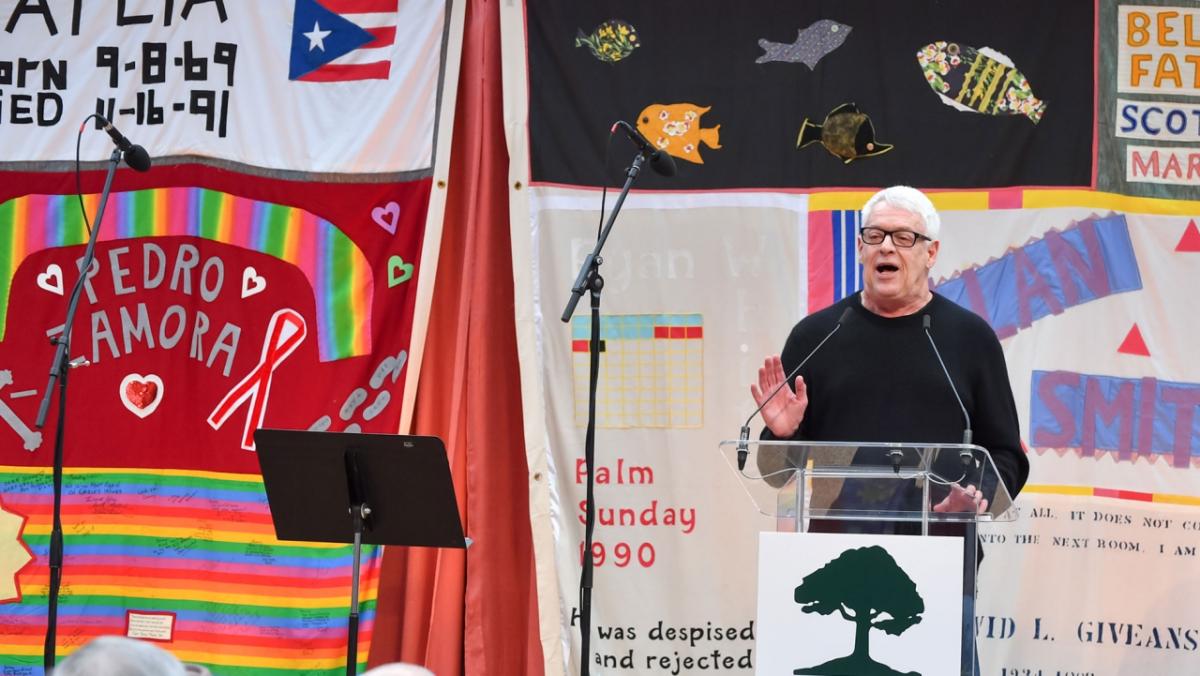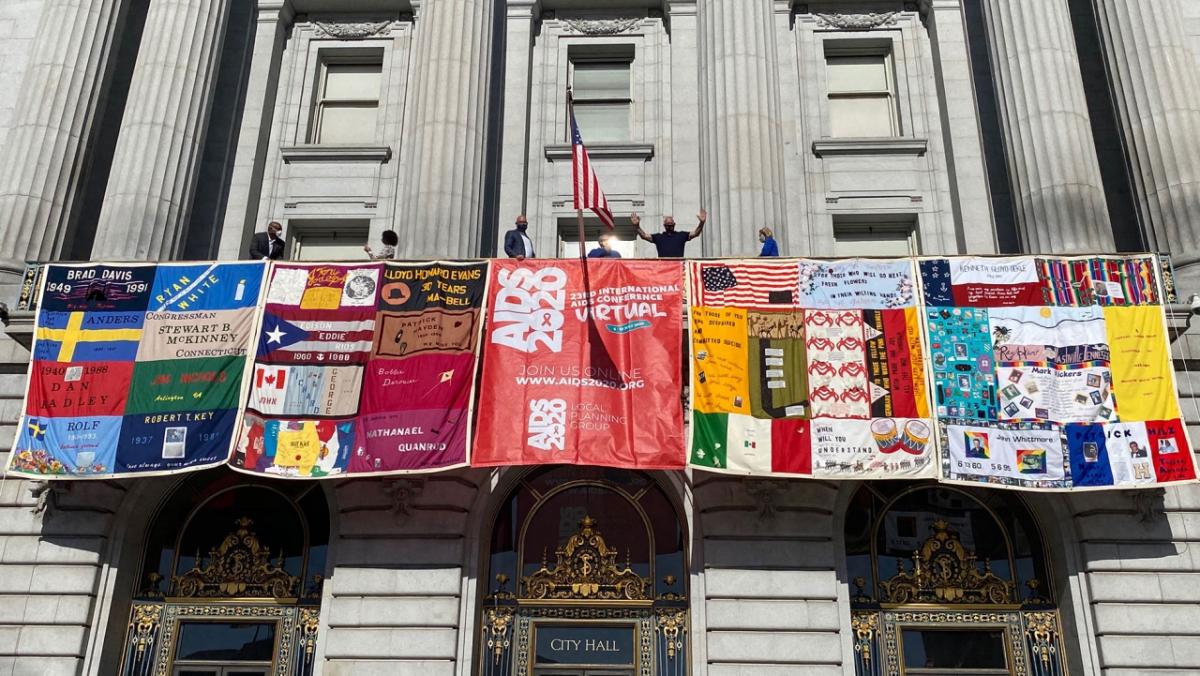Four Questions with Cleve Jones: Reflecting on the AIDS Memorial Quilt as it Returns Home
Cleve Jones is a human rights advocate who has long been a champion for people living with HIV and LGBTQ+ equality.
He co-founded the San Francisco AIDS Foundation in 1983. Two years later, he conceived of The AIDS Memorial Quilt at an annual candlelight memorial honoring his mentor Harvey Milk, the politician and civil rights leader who was assassinated in 1978. In 1989, The Quilt was nominated for the Nobel Peace Prize and has become a worldwide symbol of the fight to end the AIDS epidemic.
The Quilt was based in Atlanta for 19 years with its former steward, the Names Project Foundation. Gilead recently partnered with the National AIDS Memorial, which acquired The Quilt earlier this year, to bring it back to San Francisco for good.
Q: Can you tell us about the history of The Quilt and some of the highlights from its more than 30 years of existence?
In 1987, I created the first quilt panel in honor of my friend Marvin Feldman. We decided to display The Quilt with 1,920 panels for the first time in October 1987, during the National March for Lesbian and Gay Rights in Washington D.C. It was a beautiful morning but also a terribly painful and poignant moment for all of us who were there. Images of The Quilt display ended up on the front page of newspapers around the world, humanizing the thousands of lives lost to AIDS. People finally understood what I was trying to communicate all this time.
We began receiving letters from people all over the world asking us to bring the quilt to their city. We loaded The Quilt on a truck and went on a tour with it through the United States and Canada. It was displayed as the centerpiece for locally coordinated fundraising and educational campaigns. Since then, The Quilt has grown to include more than 50,000 individual 3-by-6-foot memorial panels honoring more than 105,000 people who have died of AIDS-related illnesses. It’s very special to know that it’s the world’s largest piece of community folk art.
Q: When you were working on the first panel honoring your close friend, did you ever conceive The Quilt could have such a significant impact around the world?
I really believed in The Quilt and I always thought, this is just what we need – a visual representation of our loss. During the height of the epidemic, before effective treatments became available, the death rate was so devastating. We had to put humanity behind the statistics and we also needed to create a way for people to grieve together. I thought, what could be better than people working with fabric, scissors, thread and glue guns, and sitting on living room floors or in church basements sharing stories with each other about loved ones who have passed.
I had the notion that quilting was just an American folk art, but there are similar traditions all over the world. We received panels from Brazil, Thailand, Singapore – some 35 countries. It’s astonishing to see commonalities in everyone’s struggles. The Quilt helped change the hearts and minds of millions of people. It showed that all the lives had value, that all of these people were loved, had family and friends, and were part of a community.
The one thing I was not at all prepared for was the artistry and sheer beauty of the panels. Every time it’s displayed, The Quilt still takes my breath away. There is so much love that has gone into creating the individual panels and there’s power with all of them sewn together – it's quite extraordinary.
Q: What does it mean for you to have The Quilt back in San Francisco after it spent many years on the road and then in Atlanta?
I'm very pleased that The Quilt has been brought back to its home in San Francisco, where it was born and where it will now stay. While we have quilt panels from all over the world and all of the U.S. states, there is no place that has as many names in The Quilt as the San Francisco Bay Area. In San Francisco alone, 20,000 people have died of AIDS. I've heard so many people say how happy they are that The Quilt is at the National AIDS Memorial in Golden Gate Park. They are going to be able to visit The Quilt again and see the panel they made for their partner, child, friend or neighbor.
Not many people know that there is also an extraordinary archive of more than 200,000 items that comes with The Quilt as well. When people send in their panels for their loved ones, they almost always include letters, photographs and other tributes.
Q: What do you hope for the future of The Quilt and the impact it can continue to have?
The Quilt is a symbol of grief, healing, inspiration and action. These messages have been particularly important since COVID-19 has swept across the world. One of the most disheartening parallels between COVID-19 and the AIDS epidemic is the racial disparity among those who have been affected.
States in the Southern U.S. such as Georgia, Louisiana, Mississippi, Alabama and Arkansas still face growing rates of people diagnosed with HIV, particularly in communities of color. This is also true of other parts of the world.
AIDS is not over. People are still acquiring HIV and dying from AIDS-related illnesses. The Quilt reminds us that we need to do more and we need to do it better.



